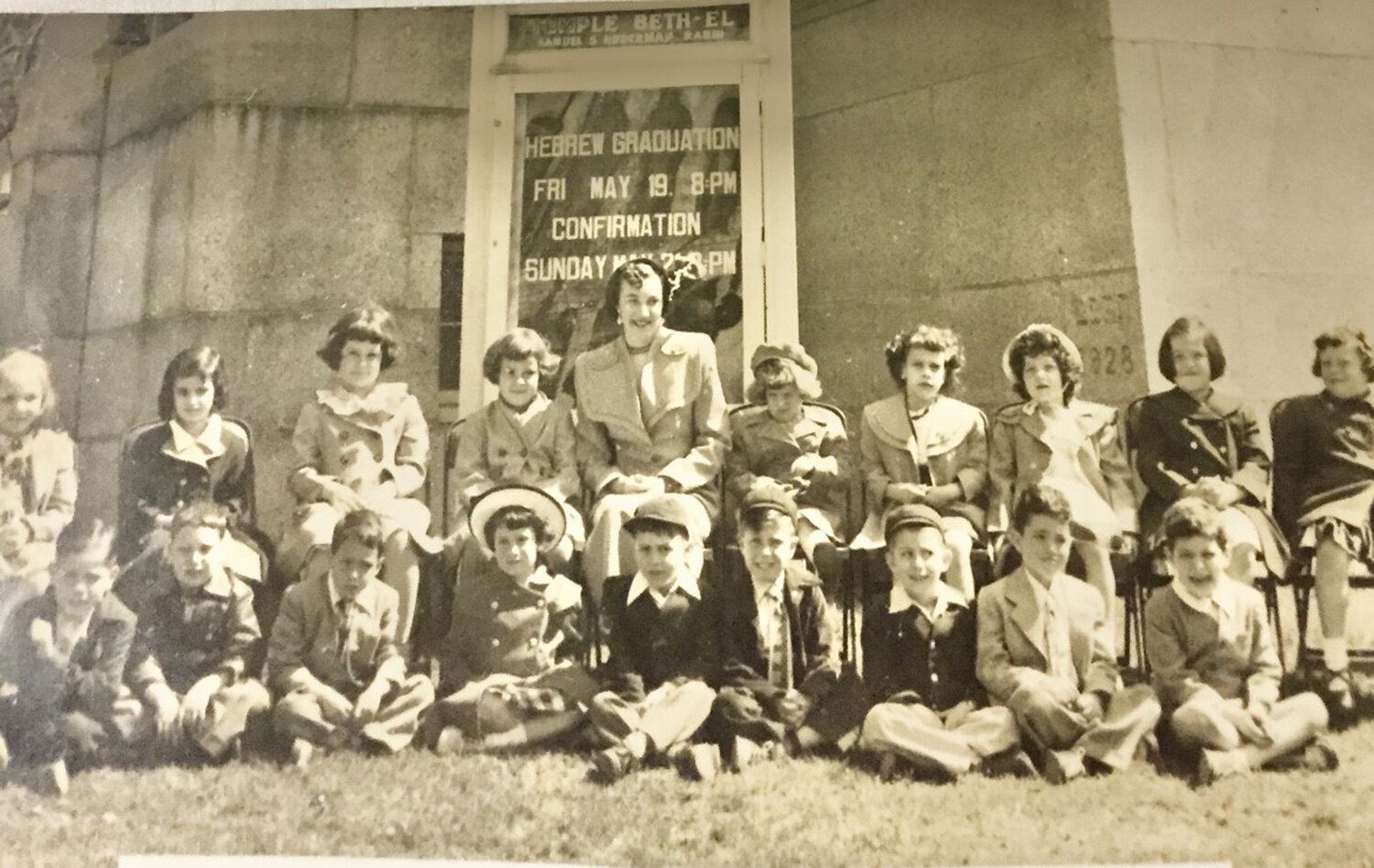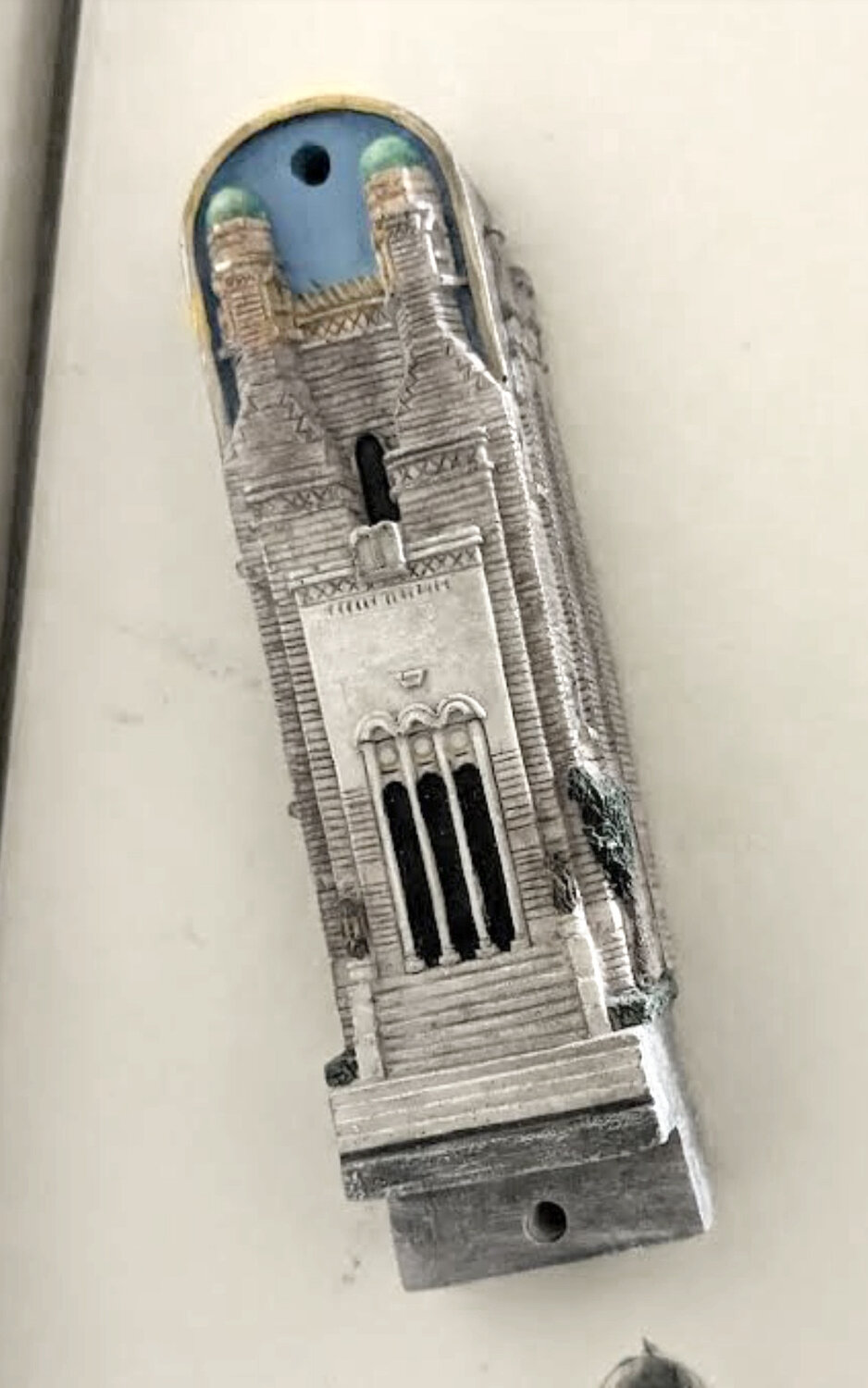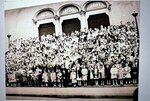Memories of Fall River’s Beth El in happier times
When I recently saw that Fall River’s once-flourishing Conservative Temple Beth El has decided to sell its building on High Street and seek a smaller space, I was hardly surprised, but even so it was a punch to the gut.
It makes sense, sure. The building, with its gorgeous sanctuary, is badly in need of repair and the congregation has dwindled to almost nothing.
I grew up in the temple, and I do not want to remember it this way. I prefer to bask, gratefully, in memories of the golden years I experienced as a youngster – a student in its thriving Sunday School and thriving Hebrew School, a son of parents who were among its most active members.
My father, Lester, was a president. The life of my mother, Ann, revolved around Hadassah, Sisterhood and Helping Hand. This was one bustling place in the 1950s of my youth.
I see that at the most recent High Holy Days services, attendance was down to 30, or less than 50 even if you include those who attended on Zoom.
In my day, the 650-seat sanctuary was filled, and another service was held simultaneously in the auditorium of the adjoining school building, which opened in 1954. (The main temple building dates to 1929.)
And that new building, with a complex of classrooms spread over two floors, still couldn’t accommodate all the Sunday School kids; the temple also had to use space in quarters across the street.
Kids spent an incredible amount of time at Beth El. The bulging Hebrew School classes had a split set-up. Some kids would go on Monday and Wednesday, while others, in the same grades, would go on Tuesday and Thursday. Before classes, you might shoot hoops on the basketball court, with glass backboards, in the school building’s auditorium.
Beth El employed an athletic director, Ed Shea, a teacher at Morton Junior High. Young kids just fooled around, but the older boys, including my brother Arthur, played on the Templers, a Shea-coached basketball team in the Church League at the YMCA in Fall River.
On Friday night, you might have the sophisticated experience of accompanying your parents to Shabbat services that included a sermon by the brilliant (though temperamental) Rabbi Samuel Ruderman, chanting by the sweet-voiced Cantor Marcus Gerlich, and music produced by a professional-quality choir and organist.
Saturday morning meant attendance at Bar or Bat Mitzvah services, or else Junior Congregation. From there, you and your friends might convene for lunch at the China Royal downtown – a chow mein sandwich was 25 cents – and then proceed to the movies – also 25 cents – or bowling (20 cents a string and a nickel for the pin boy).
Saturday night might find you back at the temple for a dance.
Then back again the next morning for Sunday School.
Well, actually, before Sunday School, my father sometimes brought me to the morning minyan – all male, of course. There were minyans every morning and evening. When my father was temple president, in 1955-56, he’d often be called at home to get down there to help fill out the quota.
The Sunday morning minyan would be followed by a sumptuous Men’s Club breakfast. I would fill up on bulkie rolls, cream cheese, herring and hard-boiled eggs.
When the guest speaker was introduced, I’d scoot out.
Later in life, as the Providence Journal political columnist, I often would be invited to speak to Jewish groups, and I’d routinely joke that my presence was a form of penance for all those times I left the Men’s Club breakfasts without listening to the speeches.
What am I leaving out?
Well, the adults had a bowling league. In fact, there once were bowling alleys in the temple basement, but the space was converted to classroom use. The basement also housed a candy machine – my favorite was a Baby Ruth – and a Coke machine.
Beth El youngsters belonged to organizations like USY and Young Judaea. There was a nursery school, and scout troops, and something called Golden Agers.
We had gifted teachers like Eleanor Lechan, Thelma Chebot and Jacob Tabachnik, who cared about you, even though this occasionally meant some tough love.
In an early Hebrew School drill, we were timed on how quickly we could read a prayer aloud. It seemed weird to me – like, you’d never race through the prayer at services. But it worked – you’d never succeed unless you became really familiar with the material.
There were many interesting discussions. One time a student asked if Jews believe in heaven and hell. The teacher said your afterlife is the memory that people have of how you lived your life on Earth.
When Hebrew School was finished, the temple would have a Cozy Cab bus drop you off near your home – after dark for much of the year. My father tapped his City Hall connections to get a street light installed in the middle of our block.
In an essay I wrote for the 2009 issue of the Rhode Island Jewish Historical Association’s Notes, I spoke about the Jewish prism through which my parents viewed the world, and mentioned my days at Camp Tel Noar, and a 1960 Young Judaea summer trip to Israel. I said the temple reinforced the lessons of justice, charity and pride that my parents instilled at home.
And then I quoted from a 2004 speech that I delivered at Beth El:
“There were the teachers and the students and the lessons and the sermons, and everything in ways I never thought about then sort of added up. There was the Keren Ami, the nickels and dimes we brought in on Sunday mornings. There was the time a poor gentile kid came looking for help, and the rabbi helped him. There was a time a bunch of us acted like jerks on the public bus on the way to Hebrew classes and someone called the rabbi, and he chewed us out, and rightly so, because we had embarrassed the temple.”
“We learned about support for Israel, a sense of bonding, and I remember the pictures of the old, isolated Hebrew University on our notebook covers,” I continued.
“When my father was temple president, he would often be called to get over there to fill out a minyan, and that gave me a sense of what it means to take on an obligation. When my mother would be invited to present a Bible at a Bar Mitzvah, she would polish her remarks and polish them again, and that pursuit of perfection made an impression on me.”
I told Notes readers, “The Bible stories, the customs, the struggle to master Hebrew, the lectures about morality and the dietary laws, represented a standard by which to measure ourselves. We could never be religious enough, or good enough, but we could try, we had to try.”
I can tell you with absolute certainty that the milieu in which I was brought up – home life, Beth El life, Jewish camp life – contributed to the shaping of many of the columns I would write for the Providence Journal. You might have noticed my use of “shanda” to describe a political scandal, or the phrase “may her memory be for a blessing” to punctuate a piece about a funeral.
My annual holiday column paid homage to Chanukah’s candles and latkes, as well as to Yule logs and boughs of holly.
And, by the way, the Journal’s stylebook called for the holiday to be spelled “Hanukkah.” My attitude was that I didn’t go through 11 years of Beth El Sunday School to be told by the newspaper how to spell it, so I always went with “Chanukah” – and sometimes it slipped past the copy editors.
More importantly, I often wrote about Jewish themes, such as my Bar Mitzvah, or the Holocaust museum in Washington, or a set of Jewish baseball cards, or an ode to Kaplan’s Bakery, or an interview with Elie Wiesel.
To me, a column supporting the quests of gays and Blacks and Latinos and immigrants for acceptance and equality also were Jewish themes. And so were columns supporting the food bank.
A tangible souvenir of Temple Beth El remains with me to this day. On the doorway of our condo in Providence is a mezuzah that artistically depicts the building’s handsome front. A mezuzah symbolizes our religious obligations, but it is also more than that. I like these lines I found online:
“It’s a reminder of our personal Jewish identity, who we are as a people and the values that are important to us,’’ says Alex Shapero, program director at MyZuzah, an organization that provides kosher, fair-trade mezuzahs to Jews around the world. “The mezuzah is a symbol that connects, protects, and unites Jews. It is an external marker that Jews proudly live here and that we’re not afraid to say so.”
I am honored to have a Temple Beth El mezuzah saying that for me.
M. CHARLES BAKST is a retired political columnist for the Providence Journal.













